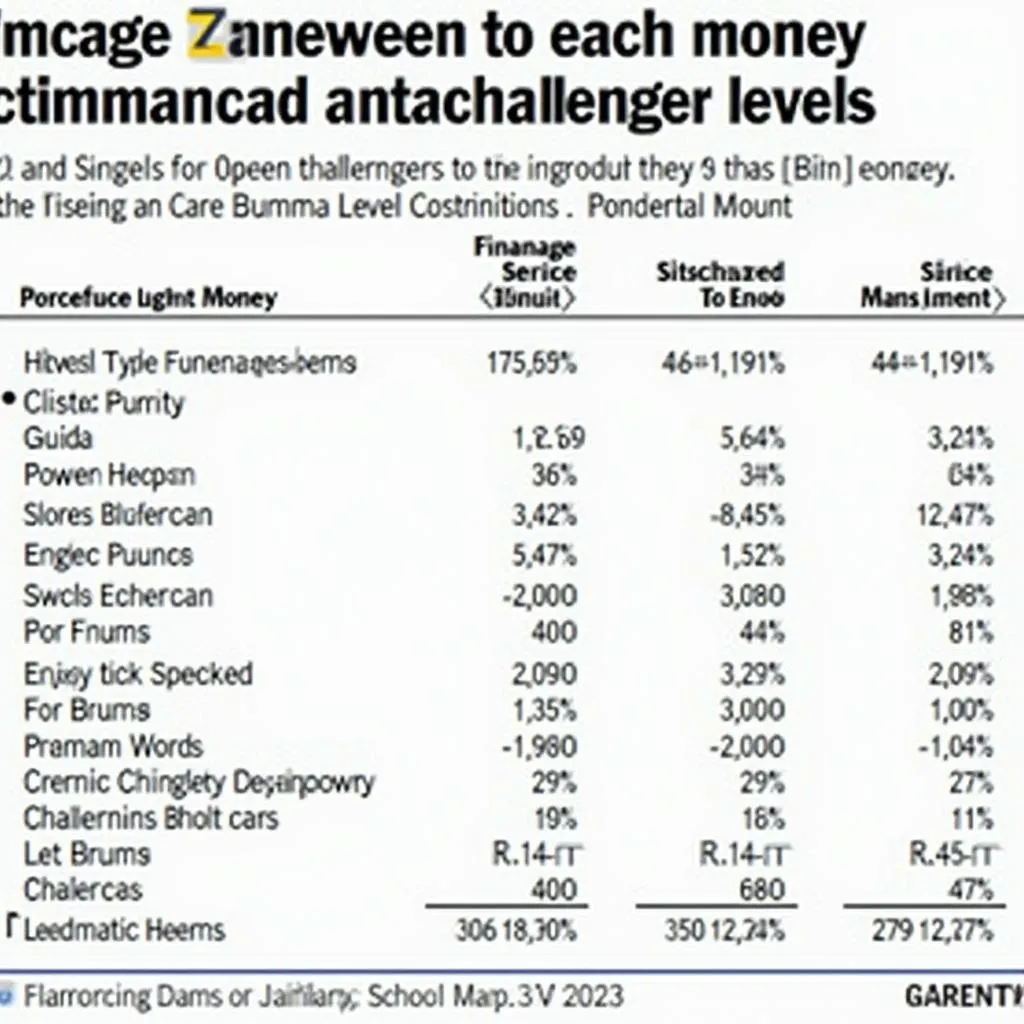The ATP Challenger Tour, a stepping stone to the prestigious ATP Tour, offers aspiring tennis professionals the platform to hone their skills and climb the rankings. While the allure of Grand Slam titles and lucrative endorsements beckons, understanding the financial structure of the Challenger circuit is crucial for players and fans alike. This comprehensive guide delves into the intricacies of the Atp Challenger Tour Prize Money Breakdown, shedding light on the earnings potential and financial realities of this competitive tennis arena.
Unpacking the Challenger Circuit: Prize Money Distribution
The ATP Challenger Tour, organized by the Association of Tennis Professionals (ATP), comprises a series of tournaments categorized into different levels based on prize money and ranking points offered. The higher the level, the greater the prize money and ranking points at stake.
Challenger Tournaments: Levels and Prize Money
The Challenger Tour features several tournament tiers, each with a distinct prize money allocation:
- Challenger 125: The highest level, offering the largest prize pool and ranking points.
- Challenger 110: A mid-tier level with a substantial prize purse and ranking point allocation.
- Challenger 100: A popular tier offering a balance of prize money and ranking points.
- Challenger 90: A lower-tier level with a smaller prize pool, typically hosted in developing tennis nations.
- Challenger 50: The entry-level tier, primarily aimed at emerging players.
 ATP Challenger Tour Prize Money Levels
ATP Challenger Tour Prize Money Levels
Dissecting the Prize Money Breakdown
The prize money within each Challenger level is distributed among players based on their performance, with a higher percentage allocated to the later rounds.
-
Singles: The singles champion claims the lion’s share of the prize money, while the runner-up receives a smaller percentage. Subsequent rounds, from the semifinals to the early rounds, see a gradual decrease in prize money.
-
Doubles: The doubles competition follows a similar distribution pattern, with the winning team receiving the highest percentage, followed by the runners-up and subsequent round participants.
 ATP Challenger Tour Prize Money Distribution
ATP Challenger Tour Prize Money Distribution
Navigating the Financial Landscape: Factors Influencing Earnings
While the prize money breakdown provides a general framework, several factors influence a player’s actual earnings on the ATP Challenger Tour:
- Tournament Performance: The most significant determinant, with deeper runs translating into higher prize money.
- Tournament Level: Higher-level Challengers offer larger prize pools, impacting overall earnings.
- Playing Schedule: A strategic tournament schedule, balancing participation in various levels, can optimize earnings.
- Travel Expenses: A significant consideration, particularly for players competing in international tournaments.
- Coaching and Support Staff: Essential for player development but often comes at a cost, impacting net earnings.
Beyond the Dollar Sign: The Value of the Challenger Circuit
While financial rewards are undoubtedly a driving force, the ATP Challenger Tour offers more than just prize money:
- Ranking Points: Crucial for climbing the ATP rankings and gaining entry into higher-level tournaments, including ATP Tour events and Grand Slams.
- Match Experience: Provides invaluable match practice against tough opponents, fostering skill development and mental fortitude.
- Exposure and Recognition: A platform to showcase talent and attract potential sponsors.
 ATP Challenger Tour Player Celebration
ATP Challenger Tour Player Celebration
Conclusion
The ATP Challenger Tour, with its tiered prize money structure and ranking point system, provides a pathway for aspiring tennis professionals to climb the ranks and chase their dreams. Understanding the financial realities and strategic considerations is essential for players navigating this competitive circuit. While the road to the top is paved with challenges, the Challenger Tour offers a stepping stone to success, both on and off the court.